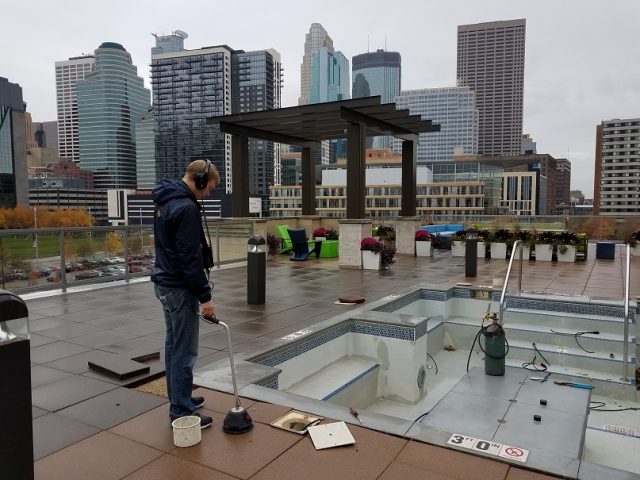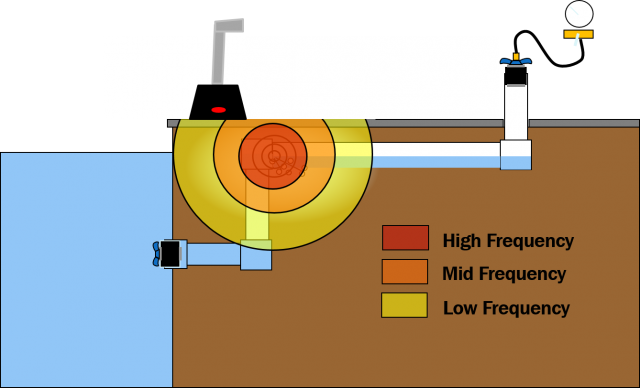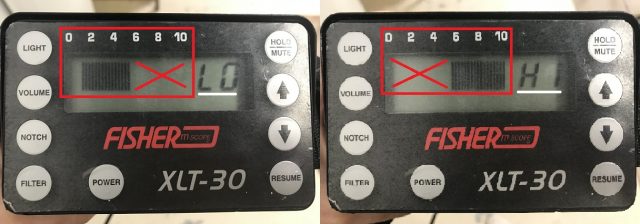Ever have trouble honing in on an underground pipe leak? Understanding how to use the frequency filters on an electronic listening device can greatly increase accuracy in underground pipe leak location. Once the correct noise is being made at the leak and the volume of the listening device is set properly, adjusting the frequency filters can provide a great advantage in identifying the leak sound and pinpointing the exact location.

Inducing air into a leaking underground plumbing line will produce a sound right at the leak’s location where the air escapes into water saturated soil. This noise at the leak is a distinct gurgling noise that produces sounds in most of the audible frequency ranges. Understanding those frequencies can help identify the exact location of the pipe leak. To illustrate this idea, think of a leak noise like a choir. In a choir you hear the song being sung as a whole but it is made up of different parts: sopranos (high frequencies), altos, tenors and bases (low frequencies). Manipulating the filters on an XLT17 or XLT30H can focus in on a specific frequency and which is beneficial for eliminating background noise and zeroing in on the leak.
How to identify which frequency range to choose has to do with how sounds travel. Low frequency sounds travel further than high frequencies. This is evident at an outdoor concert. Approaching the concert from a long ways away, the first noise that you’ll hear is the base due to its low frequency. The other higher frequency ranges aren’t heard until getting closer to the stage – the source of the sound. When listening for a leak noise, starting on a low frequency allows us to hear noises in a broader area. Then, once a leak noise is identified in a broad area, switching to a higher filter blocks out the lower frequencies in order to get closer to the leak.

Filtering can also help limit unwanted background noise in order to hear the sound of the leak more distinctly. Often times the hum of an air conditioner, electrical noise, or even cars on a freeway can be distracting when listening for a swimming pool pipe leak. While unfortunately there is no “air conditioner button”, by using the frequency filters to block out the frequency range that is most distracting, the leak noise we’re listening for becomes clearer. The XLT30H even has a specific adjustable notch filter for this purpose.

In general the leak noise should be the loudest right on top of the leak. In addition to being loud the leak noise will also be the most clear or distinct right over the leak. Sound waves will get muffled or disrupted the further they have to travel. Like at the outdoor concert, the overall sound may be heard from farther away than the actual words being sung. Listen not just for the loudest noise but the clearest and most distinct sound.
It takes time to play around with the different filtering options in order to understand how they impact leak noise. If you’re just getting started with leak detection, take some extra time during your next sonic location to play around with the filters on your listening device. Every job is also a learning opportunity!

